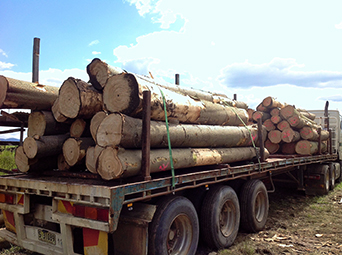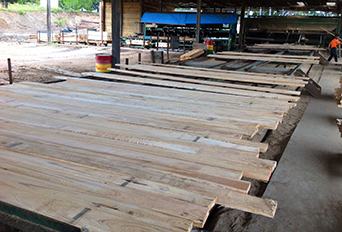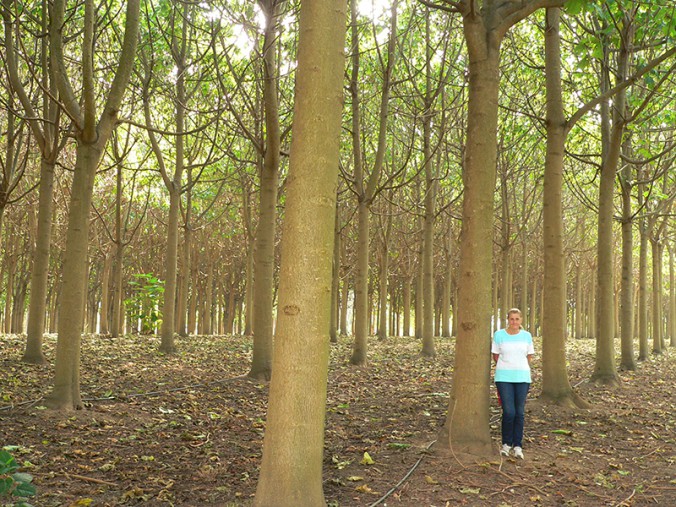Paulownia is a deciduous hardwood tree native to parts of Asia, notably China, and is well known for its vigorous growth and capacity to be grown over short rotations. Its timber is noted for its workability and outstanding strength to weight ratio.
Paulownia timber is light in colour, with a gradual transition from sapwood to heartwood. The timber has a low density (260-350 kilograms per cubic metre, at 15 percent moisture content). It is a straight grained, soft timber which is easy to air dry. After drying the timber is stable unless a notable proportion of pith is present.
Paulownia timber has good working characteristics, being easy to saw and finish. It also has good coating properties. However, it is prone to surface bruising and needs to be handled carefully during processing, finishing and use.
It is well suited for products such as light weight furniture, joinery, mouldings, jointed board, acoustic wall and ceiling panelling, veneer, blinds and shutters, door cores, fibreglass cores, caskets, boat building, caravans, toys, hobbies, some sporting goods and surfboards.
The establishment of paulownia plantations in Australia was popular during the 1980’s and 1990’s. Plantations were established, notably in small woodlots, from the central west of NSW, up along the east coast into southeast Queensland, central Queensland and north Queensland to beyond Bundaberg, plus in Western Australia. Some plantations were also established under managed investment schemes. In some instances, growth rates, tree form and yields have been lower than initial expectations.
Whilst paulownia timber continues to be imported from China, other than very modest uptake, commercial utilisation of domestically-grown paulownia plantations has proved elusive. This reality has been a major disappointment for plantation owners, and has resulted in some plantations being prematurely cleared to permit the land to be used for other purposes. .

Logs from 12-year old paulownia plantation.

Sawmilling paulownia… part of the first significant operational scale harvesting, sawmilling and kiln drying of paulownia timber in Australia.
Over the past two years significant time and resources have been invested in identifying commercially viable uses for domestically-grown paulownia timber in manufacturing applications. This has proven to be challenging, particularly because of difficulties in matching prices with imported Chinese paulownia timber products.
However, after concerted collaborative effort across the ‘supply chain’, the prospects of finding domestic manufacturing applications for Australian-grown paulownia timber are now emerging. This effort has resulted in what may be the first significant operational scale harvesting, sawmilling and kiln drying of paulownia timber in Australia, based on a paulownia plantation at Richmond on the western outskirts of Sydney.
Thanks to collaborative and continuing efforts prospects are emerging for developing a commercially viable market for domestically-grown paulownia timber in Australia. Paulownia plantation owners interested in exploring the harvesting and commercial prospects for their plantations are invited to contact me.
